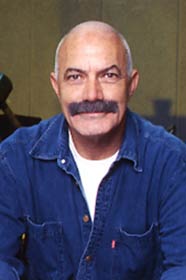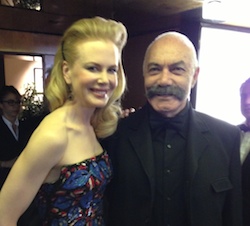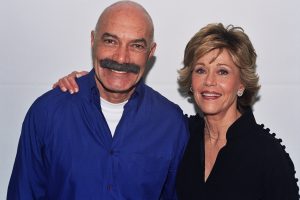The imperious shadow of Hitchcock looms large over Robert Zemeckis’s What Lies Beneath, a mildly entertaining thriller that tries aggressively but not entirely successfully to deliver the goods of three genres–suspense, supernatural and horror–for the price of one movie.
Revisiting the turf of stylish thrillers, in which an upscale yuppie couple is haunted by mistakes of the past, story centers on a genius researcher and his loving wife, played by Harrison Ford and Michelle Pfeiffer, whose seemingly happy marriage and stable life are utterly shaken and spiral out of control by mysterious events.
Intermittently scary but not fully absorbing, this DreamWorks-Fox co-production should grab strong opening numbers due to a shrewd marketing that positions pic as an adult thriller. Overall, B.O. should be good, even if the convoluted thriller is bogged down by a familiar plot and middle-aged protagonists that might not prove alluring enough to today’s hip and savvy viewers.
Top-flight talent on both sides of the camera can’t quite disguise the B-quality of the script, credited to Clark Cregg, a patchwork composed of bits and pieces from Hitchcock’s classic thrillers, the Gothic (“haunted house”) tradition, the trashiness of Fatal Attraction, the creepiness of supernatural mysteries like The Sixth Sense, and so on.
What Lies Beneath is also not the vehicle expected to restore Ford and Pfeiffer to artistic respectability or commercial bankability, having made (separately) several disappointing films in a row. On the one hand, the old-fashioned material is inferior to their talents, and on the other, it’s not spooky or stylish enough to snatch the young masses dominating the summer season.
First act is an unabashed “reworking” of Rear Window with a gender reversal. Norman and Claire Spencer (Ford and Pfeiffer) move to a new picturesque house near a Vermont lake after sending their daughter to college. As soon as they settle down, Claire begins to suspect that there’s something wrong with their neighbors, Warren and Mary Feur (James Remar and Miranda Otto). Behind a fence that divides the two estates, she hears vocal arguments, then painful cries. Following Jimmy Stewart’s path in Hitchcock’s classic, she’s glued to her window with spectacles, soon beginning to fear that Warren has murdered his wife. Norman, who’s totally consumed with his research project and upcoming conference, dismisses her reports.
With too much time on her hands, Claire wonders around the ominous house. Before long, she begins to hear whispering voices and see objects that are unexplainable, soon convincing herself that the house, which belonged to Norman’s scientist-father, is haunted by ghosts. Dismissing again Claire’s anxieties as figments of her imagination, Norman sends her to see a psychiatrist (Joe Morton), who also doubts her tales.
In a problematic sequence that lacks much credibility, an angry Claire charges Warren of murdering his wife in a public function attended by Norman’s notable peers, only to realize that his wife is there. The movie then drops the Hitchcockian subplot–which proves to be a teaser, and turns into a supernatural mystery revolving around a lone woman in a haunted house. Some humor is integrated into the proceedings by the presence of Claire’s cynical divorcee friend, Jody (a splendid Diana Scarwid), in scenes in which the two discuss witchcraft and try to communicate with ghosts on a Ouija board.
Changing gears again, third chapter centers on Claire’s discovery that her husband had an affair with a girl who’s been missing. Working as a private eye, she conducts an obsessive investigation of the girl’s whereabouts, including a visit to the girl’s distressed mother. In these segments, plot makes good use of a necklace worn by the girl and found by Claire, recalling Vertigo. Once Norman confesses to his adultery, story turns into a kind of Fatal Attraction with the hubby’s past errors and present lies plaguing the couple’s balance.
Centering on the spouses’ battle for survival, last reel, which is utterly silent, assumes the shape of a horror flick, with all the genre’s visual cliches. Mostly set in the bathroom, once again allusions are suggested to the famous shower scene in Psycho. Arguably no thriller has made such extensive use of water, both indoors and outdoors.
Occasionally, the tangled plot finds interesting ways to disclose crucial events of the past. Gradually we learn that Claire was involved in a mysterious car accident, the circumstances of which she barely remembers; that Norman suffers from a father complex; that Claire was a musician whose first husband died, leaving her the responsibility of raising their daughter.
Nonetheless, women might find the film’s subtext offensive: Claire, a talented cellist, gave up her career entirely just three months after meeting Norman, and neighbor Mary is so consumed with love, that when her hubby leaves for work she goes into unbearable flights of hysterics.
All along, the feeling is that the filmmakers don’t trust the core material, trying to compensate the audience with a complicated storyline and overbaked production. Zemeckis, best known for combining storytelling skills and technical wizardry (Forrest Gump, Contact), operates on a new turf, directing a thriller for the first time. Helmer succeeds in creating a swirl of Hitchcockian suspense, which means that you can expect a nasty fright every time a door opens, a shock when the family dog appears out of nowhere, a scare when a bathtub gets filled with water with no human presence in sight, and so on. But something is amiss: Sophisticated technology can’t substitute for intriguing characters, which are lacking here.
Though he gets star billing, Ford actually plays a supporting role–he’s hardly present in the first hour. Ford employs his customary “Rock of Gibraltar” strength but, despite twists and turns, his role isn’t particularly rewarding. Credibly cast as his vulnerable wife, Pfeiffer almost succeeds in holding the picture together with her beautiful presence. However, what both stars desperately need is help from a larger, more colorful gallery of secondary characters–pic is vastly underpopulated, particularly in its second half.
Tech credits are high grade, especially widescreen lensing by Zemeckis’ longtime collaborator Don Burgess, which keeps things fluid during the numerous house-bound scenes. There are notable trick shots within tight and confined spaces, good use of multiple mirrors that both reflect and distort Claire’s reality, and long takes that allow the actors to develop a scene organically. Echoing motifs of Bernard Herrmann’s music for Hitchcock, Alan Silvetsri’s score contributes effectively to the menacing atmosphere.










